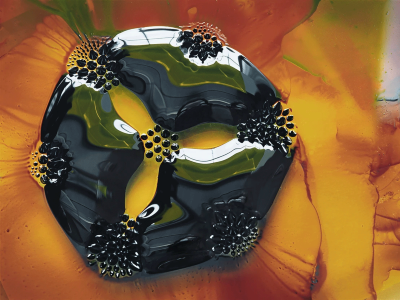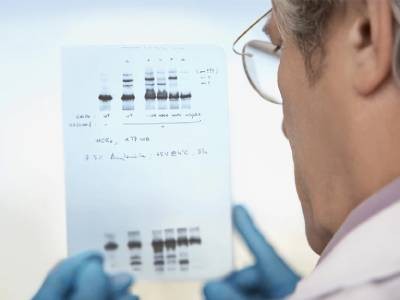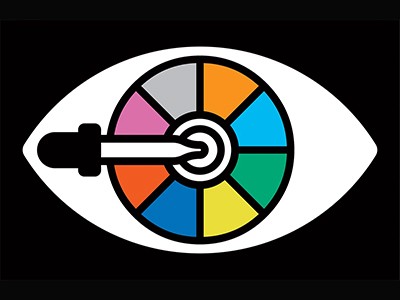A decade in the past, Helena Jambor discovered herself struggling to know the figures within the scientific papers she was studying throughout her postdoc. Jambor was finding out how fluorescently labelled messenger RNA arranges itself inside embryos of the fruit fly Drosophila melanogaster and wished to decide on the photographs that may most clearly convey her findings. However she couldn’t discover many beneficial tips — and even good examples within the literature. “Whenever you begin out, you suppose you’re the one who’s silly,” she says. “However after ten years in science, you understand, okay, now I’m an professional and I nonetheless don’t perceive a few of these figures.”
Jambor, now a biologist and visualization specialist on the Dresden College of Know-how in Germany, realized that picture presentation wasn’t only a drawback in her personal subject. In 2021, when she and her colleagues analysed the figures of 580 biology papers in 15 high journals, they discovered that almost all contained poorly introduced photos (H. Jambor et al. PLoS Biol. 19, e3001161; 2021). Many panels lacked labels or scale bars, and annotation options, comparable to descriptive textual content and arrows, had been typically lacking from the imaged objects. “I simply suppose it’s unhappy if somebody spends 4 years researching a tremendous problem and publishes a paper after which has a determine that’s not totally comprehensible,” she says. “It would inevitably scale back the readership.”
Will AI jeopardize science images? There’s nonetheless time to create an moral code of conduct
Whereas scientists obtain in depth coaching on how you can accumulate information, much less work goes into instructing them how you can showcase the data in publications, shows and grant functions. For a lot of kinds of determine panel, together with photomicrographs and pictures of gel-based protein assays often known as western blots, some photograph modifying is required to current them clearly. However there’s a superb line between clarifying and manipulating — as highlighted by rising consideration given to scientific misconduct in printed papers.
Some journals and scientific societies are actually growing tips to assist researchers to current their hard-won information properly whereas sustaining picture integrity. The elevated consideration is an effective factor, says Elisabeth Bik, a microbiologist and full-time picture sleuth in San Francisco, California. “In case you put the hassle into these fronts, you will discover [both errors and deliberate manipulations] earlier than they get printed.”
Slippery slope
Many facets of modifying are widespread sense, says Jana Christopher, an image-integrity analyst on the Federation of European Biochemical Societies, who is predicated in Heidelberg, Germany. As an illustration, it’s OK to extend the picture’s distinction so {that a} cell or characteristic pops out in opposition to the background, however the background nonetheless needs to be seen. Altering brightness or saturation can be acceptable so long as the modification is utilized equally throughout the entire picture. Cropping is ok if the method doesn’t take away components that may change the interpretation of the picture — in any case, Christopher notes, choosing a selected subject of view beneath the microscope is in itself a type of cropping and selective reporting. “The underside line is that the photographs have to symbolize precisely what was noticed experimentally,” she says.
Picture annotation is crucial. Jambor is shocked by what number of pictures lack scale bars, for example. “Individuals appear to only suppose that it’s good for adornment or one thing, nevertheless it’s truly important,” she says, as a result of organic scales fluctuate extensively. “If we blow the smallest cell as much as the scale of a ping-pong ball, the biggest cell, as compared, is the peak of Mount Everest.”
How journals are combating again in opposition to a wave of questionable photos
Accessibility can be typically missed. Jambor’s research discovered that some 20–50% of organic papers comprise at the least one determine that isn’t comprehensible for individuals who have crimson–inexperienced color blindness, for example. Exhibiting colored fluorescent photos aspect by aspect as an alternative of overlaid on each other — and annotating every part — helps to alleviate this drawback. So does choosing a special color palette or displaying the photographs in greyscale. Widespread image-processing software program, comparable to ImageJ, contains instruments that verify whether or not photos are appropriate for people who find themselves colour-blind.
However as useful as such applications could be, the temptation to beautify photos could be a slippery slope. Some researchers, for example, will use modifying software program, comparable to Adobe Photoshop, to ‘clone’ components of a picture and paste them onto different sections to cowl a crack or piece of mud within the pattern. This calls your entire paper’s integrity into query, Bik says: “We’ll ask questions.”
As experimental know-how modifications, so do requirements across the photos they seize. “With any new approach, you need to come to an settlement on what is feasible or moral,” Bik says. As an illustration, 20 years in the past it was thought of acceptable to place items of various western blots subsequent to 1 one other and {photograph} them as one picture. These days, Bik says, that is frowned on and authors are anticipated to make it clear when this has been finished. The cardinal rule is to indicate your work.
Color me higher: fixing figures for color blindness
Some requirements, nevertheless, stay fixed, Bik notes. A 2004 paper within the Journal of Cell Biology — printed simply as instruments comparable to Photoshop had been turning into extensively obtainable to scientists — outlined tips that she says are nonetheless the gold commonplace for picture evaluation as we speak (M. Rossner and Ok. M. Yamada J. Cell Biol. 166, 11–15; 2004). As an illustration, the research’s authors wrote that researchers shouldn’t selectively improve particular options, for instance by including a black dot in Photoshop to make a particle extra seen, or enhance the variety of pixels past these contained within the unique picture, successfully creating new information.
“Information should be reported immediately, not by means of a filter based mostly on what you suppose they ‘ought to’ illustrate to your viewers,” the authors wrote, warning in opposition to the “tempting risks of digital manipulation”. They added, “Simply because the instruments exist to scrub up sloppy work digitally, that’s no excuse to do sloppy work.”


